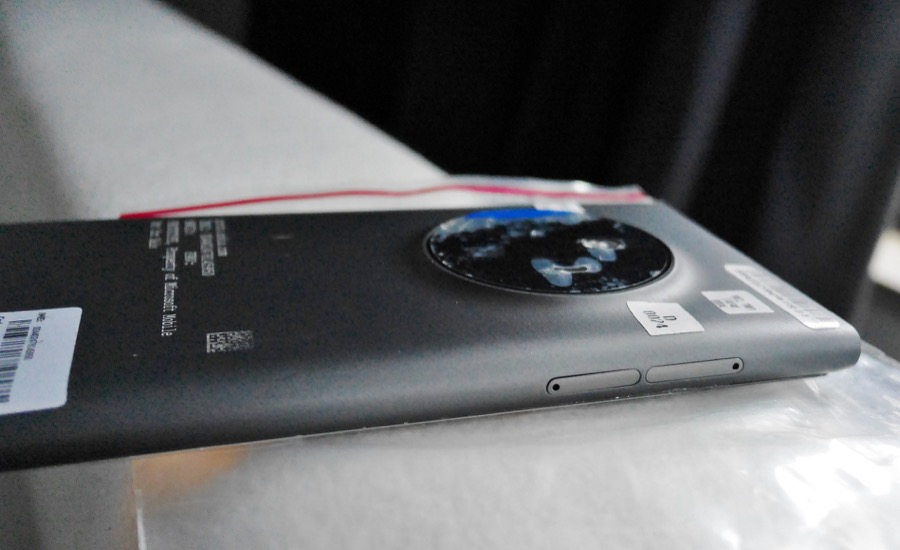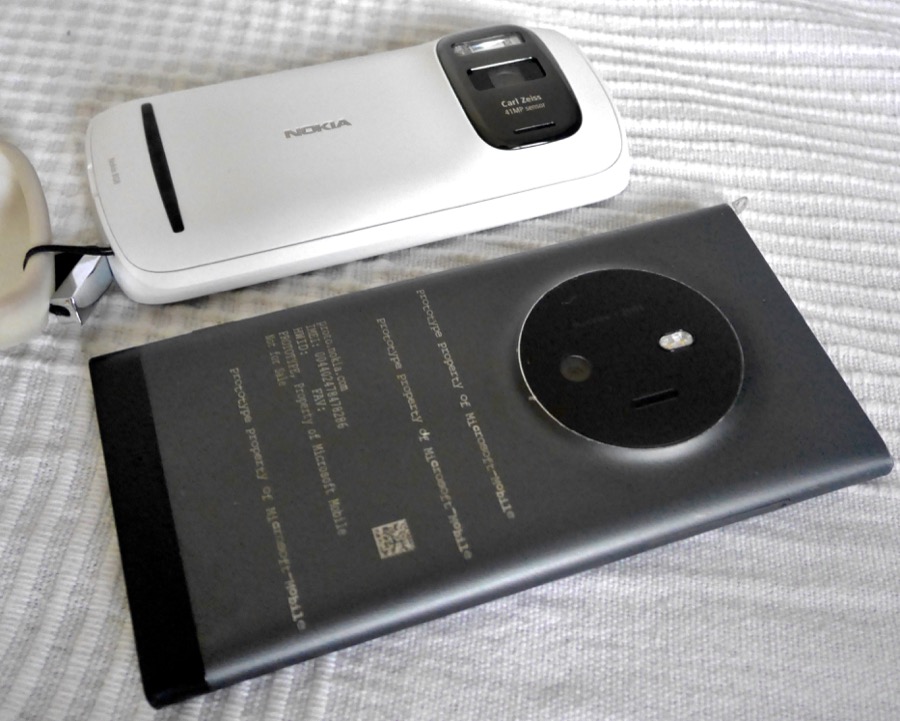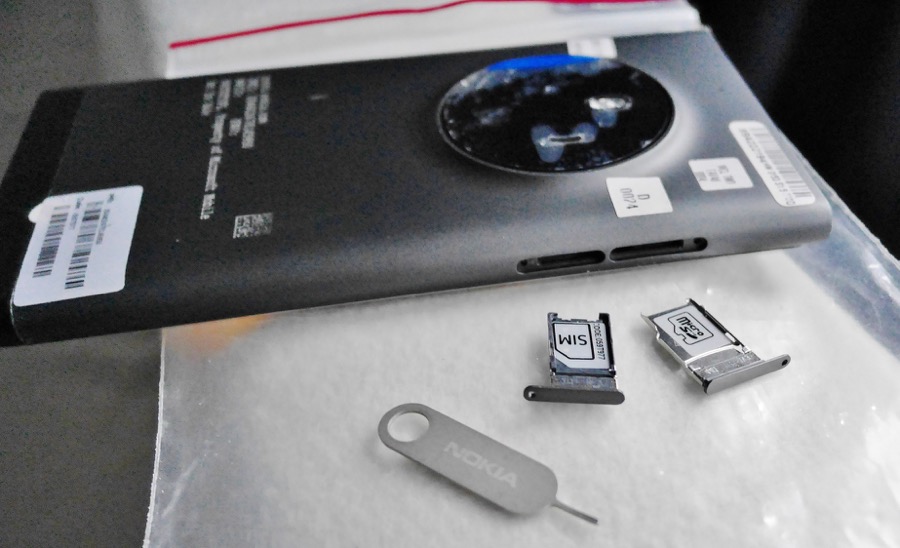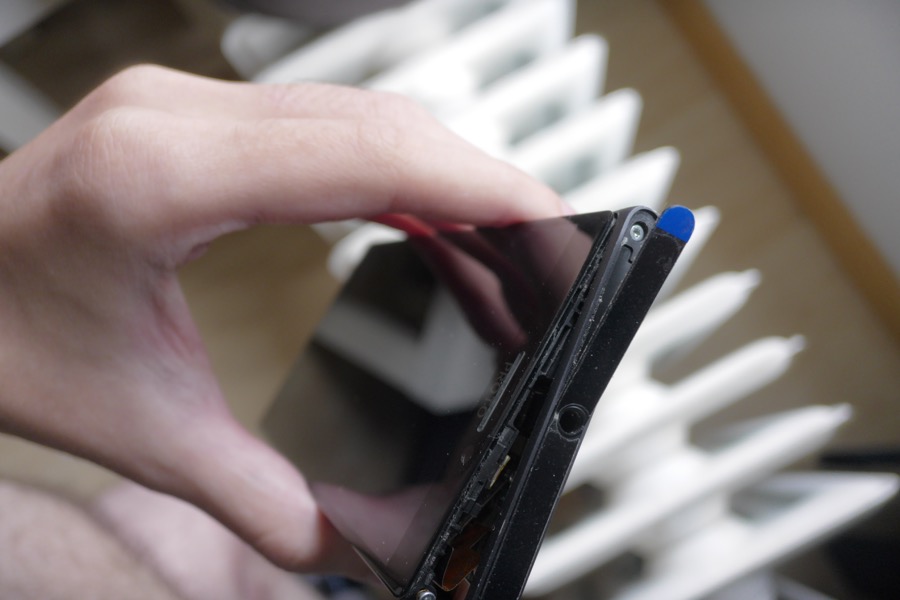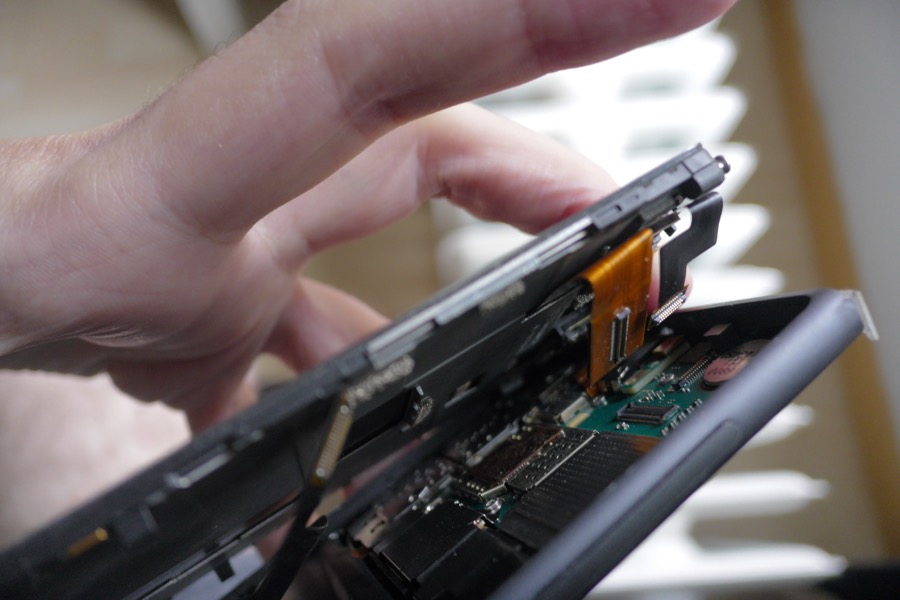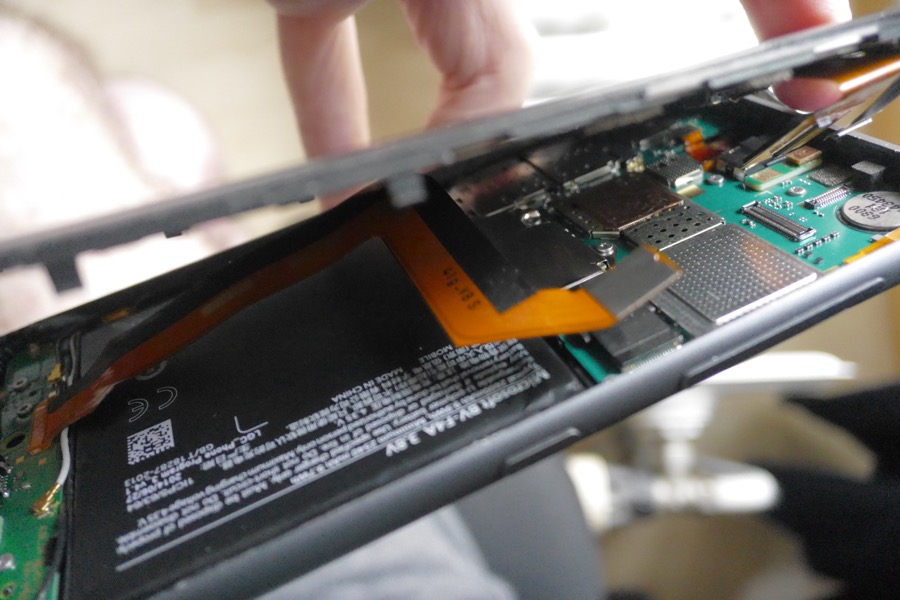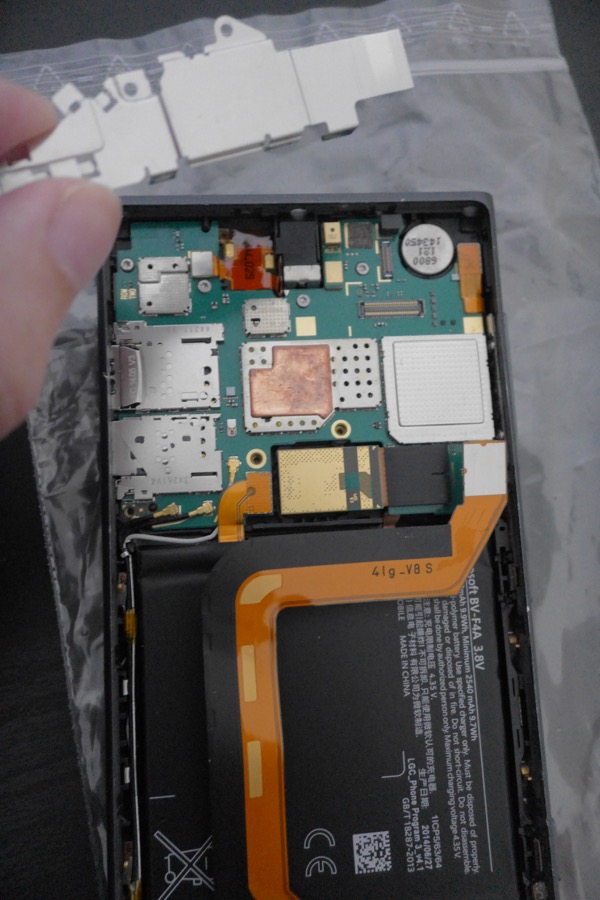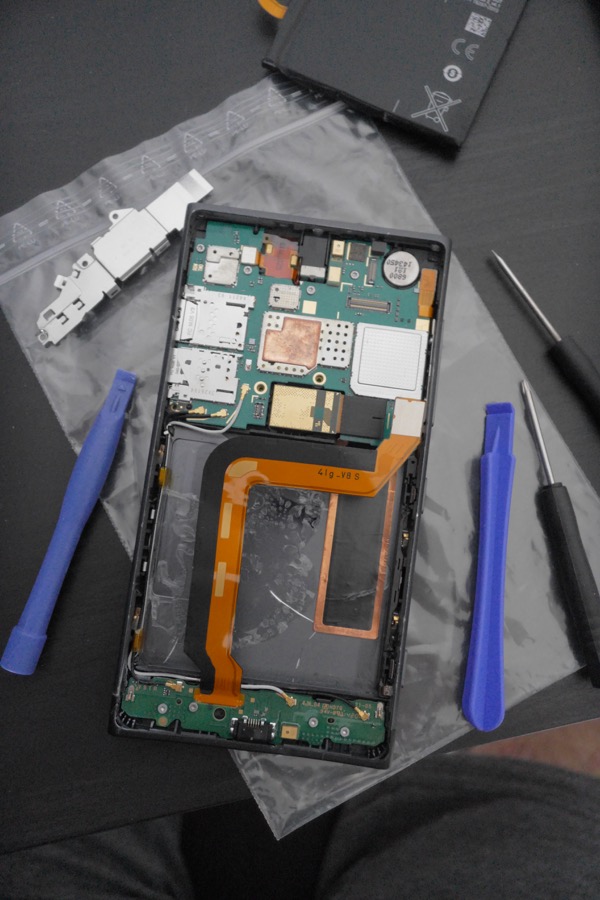Somewhere back in 2013-14… A top secret project… A novel technology is built in Nokia's research department… An innovative technology that was meant to be a game changer in the way we interact with our smartphones… Smarter than touch. More predictive than gestures. Faster than shortcuts. Innovative thinking out of the box. A technology that was abandoned and never released…
(My first, version 1.0 Nokia McLaren that came with the 3D Touch technology)
Here, in my third and last part, a story comes to an end. I collected as much information as I could about the various Nokia McLarens (a.k.a. Lumia 1030), the flagship of the never released Pre-Touch technology. As I promised, I will share all this unofficial information with you. It is based on observation and personal experience, and thus it cannot be considered as official (Nokia and Microsoft have never officially spoken about the McLarens or the technology in public).
First of all, the McLarens were designed as a replacement and the final commercial product for the Nokia Goldfinger that was initially meant to be the flagship of the Pre-Touch technology and the Lumia ’30 generation. When the McLaren was built, the Goldfinger would be left only for factory tests and further development of the technology (it was a glossy, curvy unibody design with integrated wireless charging, like the Lumia 920). The McLarens themselves went through various developmental stages too. That’s the reason why there are so many variants. There were rumors that the McLarens would be released in 3 colors; two classic, black and silver, and a third one, probably bronze or something else.
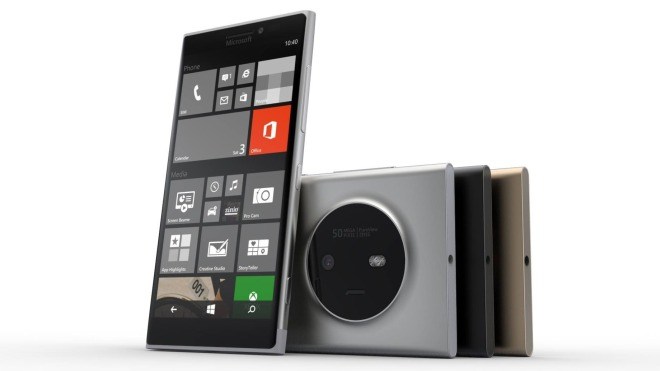
(source; gsmarena.com concept photos based on rumors)
In fact the rumors were not far from true. I have seen 'in the flesh', black, silver and, instead of bronze, grey prototypes. I have also seen 'unfinished' factory prototypes that were plain aluminum (unstained) and that had openings for hardware testing.
I have collected photos of as many prototypes I could find as possible and here I present to you the 3(+1) different colors of the McLarens in the collage below;
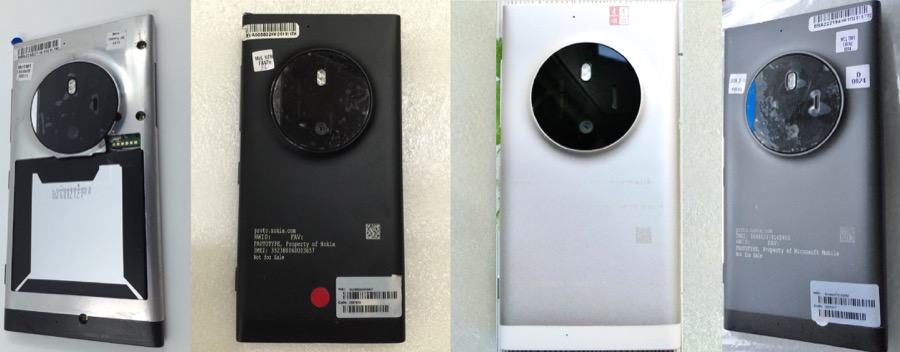
(various sources, the last one is the one I own now)
In terms of production, I hypothesize that the oldest ones were the black ones. Most of them have written 'Property of Nokia' on their label on the rear, meaning that they were built before the acquisition of the Nokia Mobile department by Microsoft. All other prototypes have either written both Nokia and Microsoft on the back or only Microsoft, which means they were built after acquisition. The newest are the grey ones. The black and white ones were built in the beginning in order to become commercial colours, but later the grey ones were built (either they had decided to postpone or cancel the release at that time).
Let’s go deeper and move ahead to the product names now. Some product names that I have found include the RM-1001, RM-1002, RM-1003, RM-1004, RM-1051, and RM-1052. However, I have also noticed that the product name alone doesn’t confirm the evolution during development and, of course, there are questions that only the company can answer. Fact is that an RM-1004 prototype that I own now is more evolved than an RM-1051 prototype I owned before. One explanation might be that after the development of the RM-1004, the company decided to either postpone or cancel the release of the Lumia 1030 and after releasing other phones (for instance the RM numbers between the 1004 and the 1051), they decided to produce the old, (cheaper?) version again in order to develop the software/technology further (so the first version came back under the product names of RM-1051 and RM-1052). [Or maybe the 1002, 1003, etc. numbers were simply 'dummy' numbers for prototypes and mean nothing? - Ed]
An alternative name for the factory prototypes are their 'id', in the case of the McLaren it is id315-X, where X a single number that practically means nothing in terms of hardware. I noticed, for instance, that while I had the number 6 in my proto and it was branded with an Asian (I think) variant, after resetting the phone, the number changed to 2 (Finland-Scandinavian variant). So, the X is linked to the region that the software was targeting (although, at least between these two regions, I didn’t notice any difference in terms of apps or functionality after the reset).
Now, let’s go even deeper into the details that matter the most. I figured out that the most important number for the hardware, and thus the developmental stage, is the hardware revision. From what I have noticed in other Nokia models, the very first prototypes had a hardware revision number of 1.0.0.0. Later, when they were developed further, they had revision number of 0.1.0.X etc. This is what I observed from older Nokia phones at least and, based on the external printed label of the McLarens, my hypothesis is confirmed. So, for example, if I see a black McLaren, with Nokia label on its back and hardware revision 1.0.0.0, then I assume that this is one of the first McLarens, if I see a silver or grey that has Microsoft label on its back and a number of 0.1.0.2, then I assume that it was a later prototype, and if I see a grey one with clear Microsoft labeling on its back and hardware revision of 0.1.5.2, then I assume that this is one of the most evolved prototypes.
In summary, despite all the different numbers, names, colors etc, the main versions that I have ever seen in the flesh are only two; the version 1.0 (like the 1.0.0.0 or 0.1.0.X) and the more evolved version 1.5 (0.1.5.X). These two have a few small visible differences (and some more if you disassemble them).
- The first difference that is noticeable without even turning the device on: the version 1.0 has one common cover for both the microSD and the nanoSIM cards, connected to the microSD port, meaning that in order to take out the nanoSIM card, you must remove the microSD card first. The version 1.5 however, solved this issue by making two independent covers, one for each port.

(ports in version 1.0)
(ports in version 1.5)
- Secondly, the LCD screen. A true quality difference that might not be noticeable from the beginning. I could observe it under light (screen off), when I realized that the screen of the version 1.0 seems slightly blueish, while the screen of the version 1.5 is greyish. The quality when on is a bit clearer I would say. The version 1.5 screen has much better black, more vibrant and accurate colors and is brighter than the version 1.0. I tried some tricks to test if the 1.5 is AMOLED, so I compared it to my 6.5 years ol’ faithful Nokia 808 PureView and tried max brightness with a black photo. Unfortunately, the screen of the McLaren, even the newer version, is probably not AMOLED. However, even in this extreme test, the version 1.5 was actually quite decent in black, much better screen compared to my Panasonic LUMIX DMC-CM1 (which also has an LCD screen). Then I compared the version 1.0 with the LUMIX in both on and off conditions and I realized that they look the same (this blueish tint when off). The LUMIX CM1 has a TFT LCD FHD 4.7’ screen and thus, the information I got from these tests is that the version 1.0 has a TFT LCD FHD 5.5’ screen, while the improved version 1.5 has a good quality IPS LCD FHD 5.5’ screen that, although is not as good as a pure AMOLED screen, is not that far off either.
(here again my first McLaren v1.0 next to my beloved Nokia 808 PureView)
- Performance/storage balance. We all know so far that the McLaren was meant to have 32GB plus external storage space through a microSD card. The version 1.0 indeed had 32GB (with about 29GB after a reset). The version 1.5, however, is of unknown storage. I assume that it might be about 24GB, because about 20GB are visible, although I might be wrong about the total storage. However, fact is that the performance is better in the version 1.5 (I don’t have any information about its processor though). One theory could be that they have exactly the same storage, RAM and processor, but in the version 1.5, there is less free (and visible) storage in order to use the rest somehow to improve performance (like RAM swapping perhaps?). But of course this is a theory. Fact is that the v.1.0 has more free storage after reset, while the v.1.5 has better performance.
These are the main differences that I could observe while having both McLarens for a while, and also some minor differences after partial disassembly (for battery change).
And something that you might have not realized by now. All of the prototype leaks we have seen on the internet until now are version 1.0. Here, exclusively on AAWP and AAS, this is the first time ever that the more evolved version 1.5 is finally revealed.
(My v.1.5 McLaren)
Regarding the software part, as I had mentioned in Part 1, there are different versions that allow different functionality of the technology. The oldest versions don’t support any 3D Touch technology at all, they behave just like any other touch smartphone we know. Intermediate versions support only the non-touch functionality only (so handling of the device from a distance). Newer versions support all features of the Pre-Touch technologies I described in Part 1 and 2 (MixView, Hover, Grip-to-lock, Shell touch, 3D touch Nokia Camera, etc), plus Glance Screen, extra settings, etc and also the 3D Touch installed apps vary (3D testing/adjusting apps etc). However, the good news is that newer firmware versions are also compatible with old prototypes, if someone has access to these files. Since it was never released, the flashing files remained internal. However, some brave developers managed to flash/upgrade the firmware version of their completely non-3D touch McLaren to a newer firmware with full functionality. You can check here their risky attempt (in the end fortunately it worked!)
Here, Part 3 of this story comes to an end. I tried to provide you with more information and fill in the gaps that were left from older reviews. I hope you enjoyed and learned some useful aspects about the unreleased McLaren and the unreleased Pre-Touch technologies. For all of these years there was no official information on them, however, this might change. The executive vice president of Microsoft announced that at some point she will tell the whole story behind the secret and unreleased McLaren.
For any of you that own a prototype or plan to buy one at some point, I have one last bonus mini-feature below. Grab a coffee....
______________
Bonus Part 4: The inner world of the McLarens
Here I prepared a guide for battery replacement, but it might be handy in the replacement of other components as well (hopefully you won’t need to replace anything else!) This is for academic purposes of course, I do not recommend you to try it on your own, but rather take the prototype to an experienced phone service centre. Still, this might be useful for the service person, since the McLaren is an unreleased prototype and probably they have never seen one before. So, let’s get started!
The Nokia Mclaren (a.k.a. Lumia 1030) design is aluminum unibody with plastic rubber on the bottom (white rubber in the case of the silver prototypes, black in the cases of black and grey ones), unlike all other Lumia phones which are primarily polycarbonate (plastic). Therefore it feels and looks more premium than the rest Lumias. But it is also more paint-scratch vulnerable during disassembly, so I recommend using plastic tools if possible.
First of all, we need to remove the strip on the top (3.5mm audio jack) carefully.
Once we do this, we will see two screws, one on the left, one on the right side. We remove them as well.
Afterwards, we try very carefully to take the screen out. It has 4 clips, 2 on each side, below the middle part of the phone. With some thin, plastic tools, we try from the sides of the screen to get inside and push up the screen starting from the upper part towards the lower part (extra attention when we reach the clips, so that we don’t break them). As extra assistance to push the screen out, we can use very thin screwdrivers inside the two holes of the screws we removed in the beginning and push the screen out from there, and at the same time from the sides carefully. It is very important to start from the top and continue to the bottom of the device, otherwise, we might damage both the bottom rubber that covers the antenna, and the plastic middle frame of the screen.
Finally, we manage to tilt the screen and then, we need (in version 1.0.) to carefully unscrew two screws that stabilize a steel cover of the two connectors from the motherboard (one for the front camera/sensors, one for the screen), and finally unplug the connectors:
And if we look closer, we can already see another connector that covers the battery (here I unplugged it earlier), and the two side clips below the menu button:
After we unplug the two connectors of the screen and front camera, we can safely remove it from the device. Here we see the back of the screen we removed:
And here the device itself:
As we see, the main chipset is on top, the battery in the middle, and the antenna on the bottom
Now, in the version 1.0, we need to unscrew a steel component (that I hold below) that covers the camera, the battery plug, the connector that covers the battery, and some of the small cables that lead to the antenna:
And here, after we remove it, we see the remaining components I mentioned:
Now, we can safely unplug the main antenna connector on the right. Optionally, we can also remove/replace the camera that we see in the middle, and of course unplug the battery connector that we see on the left side of the camera.
In the version v1.0, there is one more disadvantage. The battery is glued. And it is extremely hard to take it out. Do it very carefully without damaging other components of the device (there is also a connector under the battery, on the right side, check next photo.)
And finally we remove the battery! Phew!
Now, as I have mentioned already, the genuine battery (the one I removed) is the Microsoft BV-F4A, 2600mAh, 9.9 Wh, 3.8V.
At this point I decided not to proceed with further disassembly, since it is a prototype and it would be too risky to touch the main chipset of the device. However, I couldn’t resist to check the camera module, which was now accessible. We have already seen the camera modules of the Nokia 808 PureView and the Nokia Lumia 1020, so, I took out the camera of the 1030 and here it is!
Not as big as the Nokia 808's, from what I can reckon, but it is not small either!
Now, as if it wasn’t enough, I did the same procedure with the version 1.5 prototype, which has differences in the inner world too.
First of all, the screen is more durable and much easier to remove compared to the version 1.0 (the latter needs extra caution!). The top steel component that holds the two connectors of the screen and makes life difficult in version 1.0 (we need to remove that first before unplugging the connectors), it simply doesn’t exist in version 1.5. The second steel component doesn’t cover the connector above the battery, so we can simply unplug it without having to unscrew the whole part (although it still covers the battery connector). The 3.5mm jack component looks different too (steel cover vs rubber only). And finally, the battery is not glued, just fixed, so we can easily remove it, without risking of damaging any components or the battery itself!
To summarize the differences of the two versions regarding their inner worlds, I show both on the photo below (version 1.0 on the left, version 1.5 on the right).

I hope you enjoyed the bonus part as much as I did! It is the feeling of the discovery, when experimenting with an unreleased prototype and carefully opening it and revealing its inner world for the first time… Hopefully, one day, we'll get the full story, officially, as promised by Microsoft.
Comments and questions are more than welcome! I'll monitor the comments...
By Michael “Mivas_Greece”


